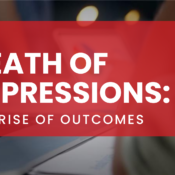/
/
Trends in Higher Education & the Rise of the For-Profit University | Part II: Survival of the Fittest
Alicia Locher | Academics Client Services
In the past few years, major players in the for-profit higher education industry have endured intense fire. Punitive legislation, tightening regulations and a scrutinizing media spotlight have put pressure on for-profits to live up to their promises of gainful employment or shut down.[i] While pending government legislation to make for-profits accountable has been significantly diluted since it was introduced in May 2010, for-profit education institutions still aren’t very popular (except maybe with Wall Street where publicly traded for-profits “brought in” $29 billion in 2009).[ii]
Critics of for-profit education point to the industry’s low graduation rates and high share of student loan default. In fact, the U.S. Department of Education affirms this first allegation, reporting that more than half the students who started their bachelor’s degree at a non-profit university graduated in six years while less than one in four students graduated in the same time from a for-profit institution.[iii] In addition the Huffington Post reports, “Although only 10 percent of students nationwide attend [for-profit] institutions, they account for nearly half of all student loan defaults [in dollars].”[iv]
Given the allegations and the evidence, why should for-profits be allowed to even stay open?
In short, they compete. Not that it’s unlike a non-profit to compete. Traditional non-profits do compete—for donations, talented athletes and visionary individuals. However, the founders of for-profits filled a need in the market that both private and public non-profits left well alone. Over the past 30 years, for-profit institutions have evolved to offer degrees and short-term programs that are typically technical and market-driven. If the degrees were not relevant or useful, one would think that a free market would dictate their eventual extinction.
Furthermore, successful for-profits developed a model that on the whole eased the financial aid application process for low-income individuals. This customer-oriented (if not revenue-focused) attention came as tuition costs sky-rocketed and the gap in median income between families of incoming freshmen and the average American family increased year after year.[v] (See yesterday’s post.) Again, the for-profits adapted leaving many non-profit counterparts in the dust.[vi]
A final trend that for-profits have already taken advantage of is the growing tide of non-traditional students. As increasing numbers of older students returned to higher education to improve their career outlook,[vii] for-profits catered to them in ways many non-profits did not. They offered flexible class times and year-round schedules. Those that offered what students wanted have survived—at least in the short term. While many of the weaker institutions may collapse in the wake of stricter government regulations, bad press and an economic recession, the best for-profit institutions will survive, flourishing from what Schumpeter called “creative destruction.” They have created an educational model driven by the free market rather than bureaucratic institutions or tradition.
Recent Posts
Mudd Advertising
Mudd Advertising is Partnering with Equifax
Mudd Advertising
Personalization at Scale—Not Just a Buzzword
Mudd Advertising
The Death of Impressions: The Rise of Outcomes
All Categories
Tags
aia ads
automotive
ctv
digital marketing
direct mail
direct marketing
display
display ads
dynamic inventory display
email
email marketing
EV marketing
facebook
gbp
google analytics
google my business
google my business inventory
google shopping ads
internet marketing
local seo
MUDDid
mudd id
online marketing
pay per click
performance max
pmax
pop
ppc
radio
retargeting
search engine marketing
search engine optimization
sem
seo
social
social media
social media marketing
traditional marketing
traditional media
ux management
vehicle listing ads
video advertising
video production
vla
web ux




